The ANDA process is the legal pathway in the United States that lets generic drug companies get approval to sell copies of brand-name medicines-without repeating expensive clinical trials. It’s not just a paperwork shortcut. It’s a carefully balanced system designed by Congress in 1984 to make life-saving drugs affordable while protecting patient safety. If you’re trying to bring a generic drug to market, understanding the legal requirements isn’t optional-it’s the difference between approval and years of delays.
What the ANDA Process Actually Does
The Abbreviated New Drug Application (ANDA) was created by the Hatch-Waxman Act, signed into law by President Ronald Reagan in September 1984. The goal? Let generic manufacturers prove their drugs work just like the original, without redoing every study the brand-name company already did. The FDA doesn’t need to re-prove safety or effectiveness. Instead, they rely on the data from the original drug, called the Reference Listed Drug (RLD). This cuts development time from over a decade to about 3-5 years and reduces costs from $2.3 billion to roughly $5-10 million per drug.
Today, 90% of prescriptions filled in the U.S. are for generic drugs. Yet they make up only about 18% of total drug spending. That’s the power of the ANDA system: it drives competition, slashes prices, and keeps millions of people on their medications. Without it, many wouldn’t be able to afford insulin, blood pressure pills, or antidepressants.
Core Legal Requirements for an ANDA Submission
To get approved, a generic drug must match the RLD in five key areas-no exceptions. These aren’t suggestions. They’re legal requirements under Section 505(j) of the Federal Food, Drug, and Cosmetic Act.
- Identical active ingredient: The generic must contain the same medicine in the same form. Minor differences (like a salt form) require a special petition to the FDA.
- Same dosage form and strength: If the brand is a 10mg tablet taken once daily, the generic must be the same. No changing the pill size, release mechanism, or dosing schedule without jumping through extra hoops.
- Same route of administration: Oral tablet? Must stay oral. Inhaler? Must match the exact device design.
- Identical labeling: The package insert must be nearly identical, except for the name of the manufacturer and minor legal disclaimers about being a generic.
- Bioequivalence: This is the scientific heart of the ANDA. The generic must show it releases the same amount of drug into the bloodstream at the same rate as the brand. The FDA requires 90% confidence intervals for Cmax and AUC to fall between 80% and 125% of the RLD. That’s not a guess-it’s a hard statistical threshold backed by decades of clinical data.
These aren’t theoretical standards. The FDA has rejected ANDAs for failing just one of these points. One company lost approval because their tablet dissolved 2% slower than the brand. Another had their application refused because the container closure system didn’t meet stability requirements.
Manufacturing and Quality Control Rules
It’s not enough to prove the drug works. You must prove you can make it the same way, every time, in a clean, controlled environment. The FDA’s Current Good Manufacturing Practices (cGMP) are legally binding. Your facility will be inspected-often without notice.
For the ANDA, you need to submit detailed Chemistry, Manufacturing, and Controls (CMC) documentation. This includes:
- Complete process descriptions for each step of manufacturing
- Specifications for raw materials and finished product
- Stability data showing the drug won’t degrade over time
- Validation of equipment and cleaning procedures
- Proof that your facility meets international quality standards
Exhibit batches must be made at commercial scale-at least 10% of your planned production size or 100,000 dosage units, whichever is larger. Many companies fail here. They test small lab batches, then try to scale up and get hit with a deficiency letter. The FDA expects you to know how your drug behaves at real-world production levels.

Filing Requirements and Fees
You can’t just mail in a stack of papers. ANDAs must be submitted electronically in the eCTD format. This structured digital format organizes your application into 15 modules covering everything from chemistry to clinical data. Missing one file? The FDA will refuse to receive your application.
You also need to file Form FDA-356h (the application form) and Form FDA-3674 (the user fee cover sheet). And you must pay the Generic Drug User Fee Amendments (GDUFA) fee. In fiscal year 2024, that’s $129,500 for a new ANDA. If you need to make changes after approval-a new supplier, a new machine, a new packaging material-you’ll pay another $5,000 for a prior approval supplement.
These fees fund the FDA’s Office of Generic Drugs. They pay for reviewers, inspectors, and the technology to process applications faster. Without GDUFA, review times would be much longer.
Patent and Exclusivity Hurdles
One of the most complex parts of the ANDA process is navigating patents. The Hatch-Waxman Act lets generic companies challenge or certify against existing patents on the brand drug. You must file one of four patent certifications:
- Paragraph I: No patent listed for the drug
- Paragraph II: The patent has expired
- Paragraph III: You’ll wait until the patent expires
- Paragraph IV: The patent is invalid or won’t be infringed
Paragraph IV is the most controversial-and the most common source of delays. If you file a Paragraph IV certification, the brand company can sue you for patent infringement. That triggers a 30-month automatic stay, blocking FDA approval even if your drug is perfect. In 2022, over 40% of ANDAs with Paragraph IV certifications faced litigation. One company waited 41 months for approval not because their drug failed, but because of legal battles.
And it’s not just patents. Some brand drugs get 5 years of data exclusivity, meaning no ANDA can even be submitted until that time passes-even if the patent has expired. Others get 3-year exclusivity for new uses or formulations. You must check the FDA’s Orange Book every time you plan an ANDA.
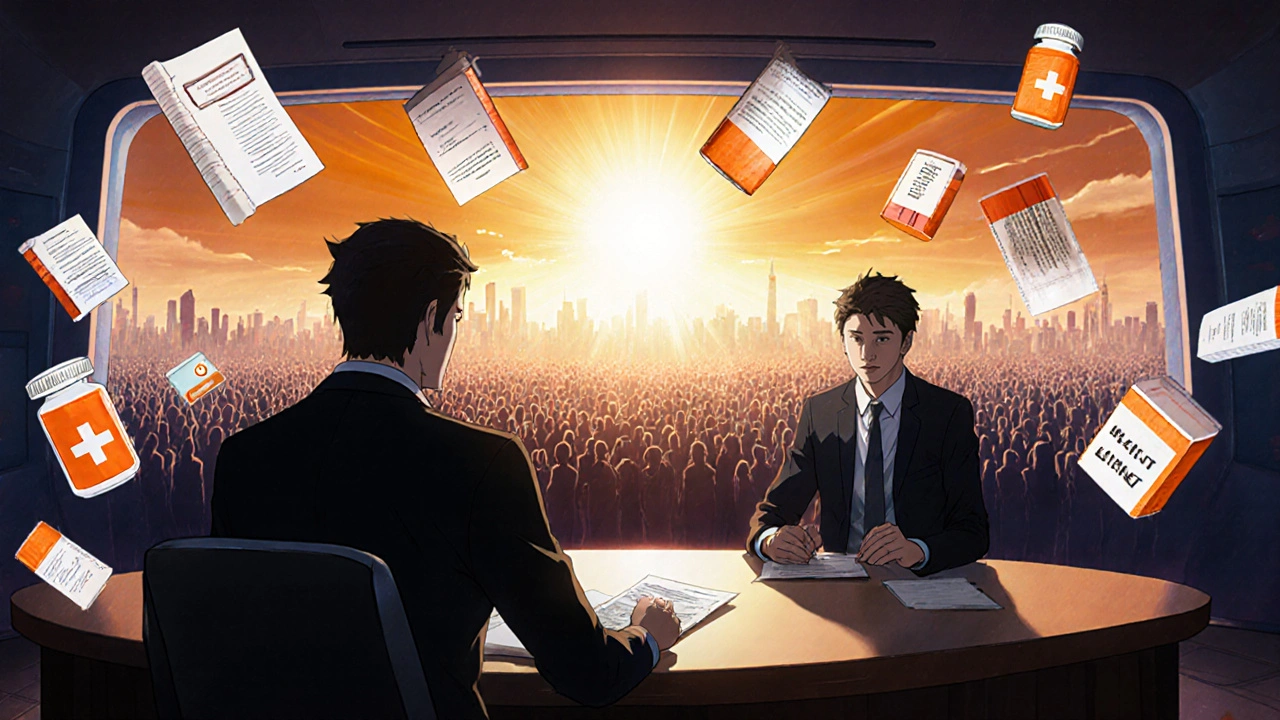
Why Some ANDAs Get Rejected-And How to Avoid It
According to FDA data, 58% of first-time ANDA submissions get deficiency letters. The most common reasons?
- Incomplete bioequivalence protocols (28% of refusals)
- Inadequate CMC documentation (23%)
- Missing or incorrect patent certifications (15%)
- Non-compliant eCTD format (12%)
One company submitted a perfectly designed bioequivalence study-but used a different buffer in the tablet than what was in the RLD. They didn’t explain why. The FDA refused to review it. Another company skipped stability testing for their blister pack and assumed the bottle data would apply. It didn’t.
The fix? Pre-ANDA meetings. In 2022, the FDA held over 1,800 of these meetings. You can request one to get feedback before you spend millions. It’s not required, but 85% of companies that used them got their first submission accepted. Regulatory consultants charge $250-$400 per hour to help prepare, but it’s cheaper than a 12-month delay.
Complex Generics: The New Frontier
Not all generics are created equal. Simple tablets? Easy. Inhalers, nasal sprays, topical creams, injectables? Hard. These are called complex generics. The FDA approved only 42% of them on first review in 2022, compared to 78% for simple tablets.
Why? Because you can’t just prove bioequivalence with blood tests. For an inhaler, you need to prove the drug particles reach the lungs the same way. For a topical cream, you need to show the drug penetrates the skin identically. The science is harder. The testing is more expensive. And the FDA is still catching up.
Companies like Teva spent $28 million and 42 months trying to get approval for a generic version of Advair Diskus. Their application was rejected three times over device performance issues-not the drug itself. That’s the reality now. If you’re targeting complex generics, assume it’ll take longer, cost more, and require deeper expertise.
The Bigger Picture: Why This Matters
The ANDA process isn’t just about rules and forms. It’s about access. In 2022, generic drugs saved U.S. consumers $2.2 trillion over the past decade. That’s not a statistic-it’s a mother choosing between insulin and rent. It’s a veteran paying $5 instead of $500 for a blood thinner.
But the system is under pressure. Brand companies are filing more patents after a drug launches-1,450 between 2015 and 2020, according to one study. Some delay generics by refusing to sell samples for testing. Congress passed the CREATES Act in 2019 to stop that, but enforcement is slow.
The FDA’s GDUFA III program (2023-2027) aims to fix this. It promises 90% of standard ANDAs reviewed in 10 months, and priority ones in 8. If they hit those targets, more generics will reach the market faster. But only if companies submit clean, complete applications.
If you’re entering this space, know this: the legal requirements are strict, but they’re clear. The path is long, but it’s proven. The payoff? Millions of people get the medicine they need, at a price they can afford. That’s not just regulation. That’s public health in action.
What is the main purpose of the ANDA process?
The main purpose of the ANDA process is to allow generic drug manufacturers to gain FDA approval for drugs that are identical to already-approved brand-name medications, without repeating costly clinical trials. This speeds up market entry, lowers drug prices, and increases patient access to affordable medicines while maintaining safety and efficacy standards.
What is the difference between ANDA and NDA?
An NDA (New Drug Application) is for brand-name drugs and requires full clinical and preclinical data proving safety and effectiveness. An ANDA (Abbreviated New Drug Application) is for generics and relies on the FDA’s prior approval of the brand-name drug. ANDAs skip clinical trials and focus on proving bioequivalence and manufacturing consistency, making them faster and cheaper to develop.
How long does the ANDA approval process take?
Under the GDUFA III program (2023-2027), the FDA aims to review standard ANDAs in 10 months and priority ANDAs in 8 months. However, the actual timeline often extends to 24-36 months due to deficiencies, patent litigation, or complex product requirements. Simple generics typically move faster than complex ones like inhalers or topical products.
What are GDUFA fees, and why are they required?
GDUFA (Generic Drug User Fee Amendments) fees are payments made by generic drug manufacturers to fund the FDA’s review of ANDAs. In 2024, the fee for a new ANDA is $129,500. These fees pay for reviewers, inspections, and technology that help the FDA process applications faster and more efficiently. Without GDUFA, review times would be significantly longer.
What happens if a generic drug fails bioequivalence testing?
If a generic drug fails bioequivalence testing, the FDA will not approve the ANDA. The manufacturer must revise the formulation, conduct new studies, and resubmit the application. Bioequivalence is mandatory-without it, the drug cannot be considered therapeutically equivalent to the brand-name product, even if all other requirements are met.
Can a generic drug have different inactive ingredients than the brand?
Yes, inactive ingredients (like fillers, dyes, or preservatives) can be different in a generic drug. However, they must not affect the drug’s safety, performance, or absorption. If the change impacts bioavailability, the manufacturer must submit additional data or request a suitability petition from the FDA. Many generics use different dyes or coatings to avoid trademarked colors or allergens.
What is a Paragraph IV certification, and why is it risky?
A Paragraph IV certification is a legal statement filed with the FDA claiming that a patent on the brand drug is invalid or won’t be infringed by the generic. This allows the generic to enter the market before the patent expires. But it triggers an automatic 30-month stay if the brand company sues for infringement. This can delay approval for years, even if the generic is scientifically sound. Many companies avoid Paragraph IV unless they’re confident in their legal position.
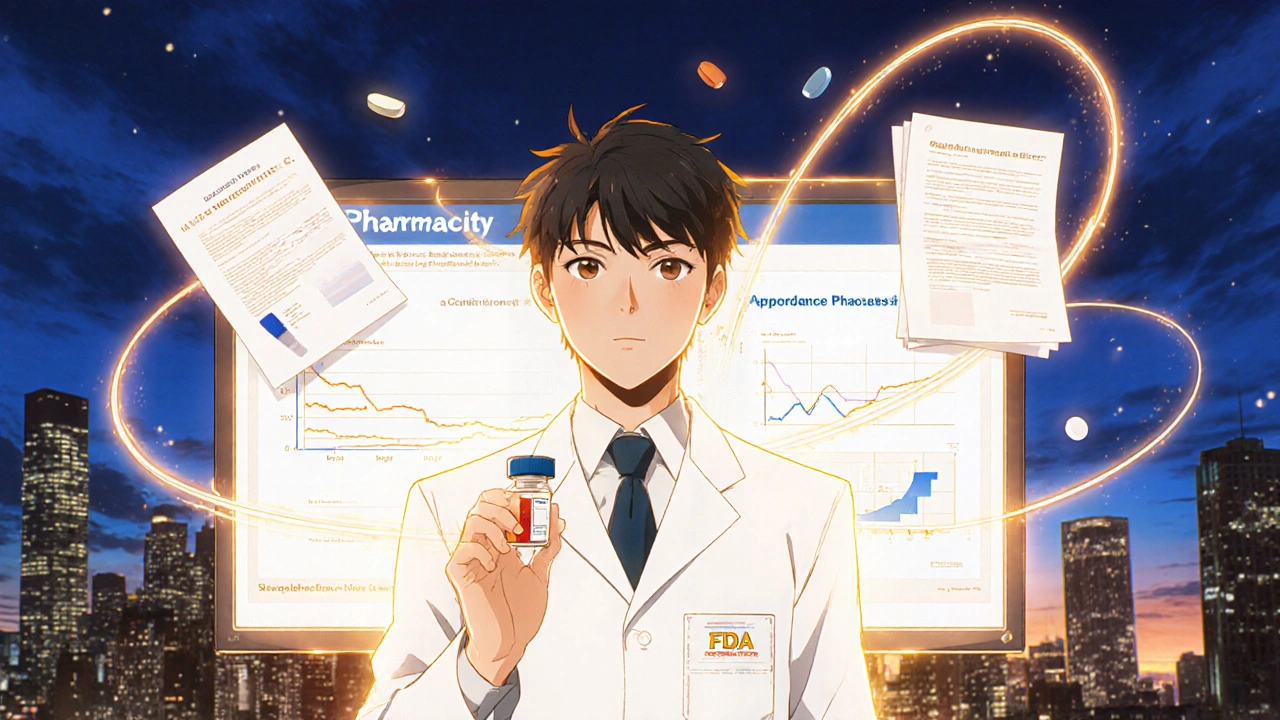
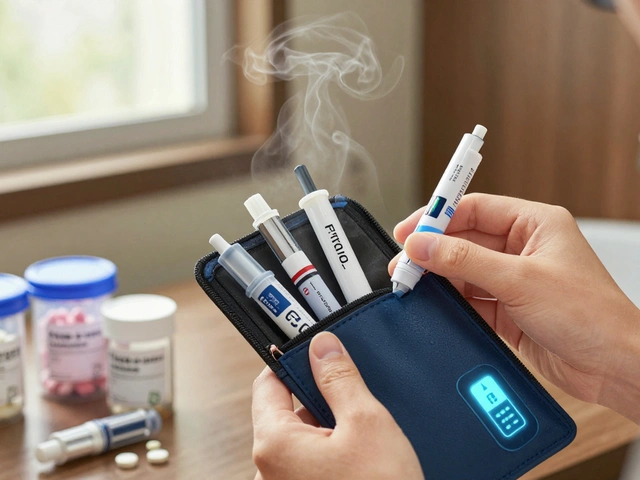
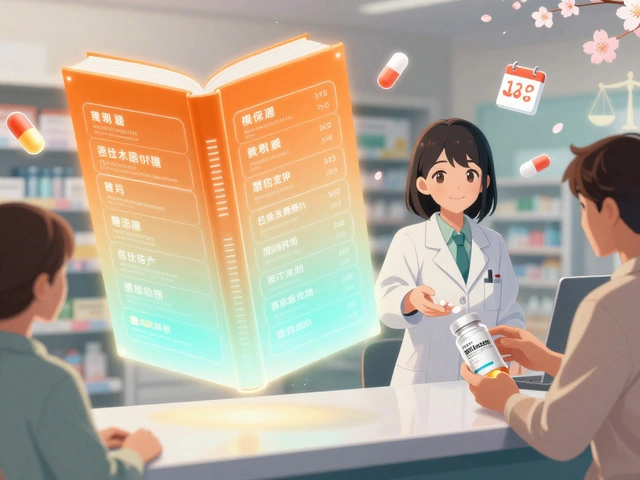

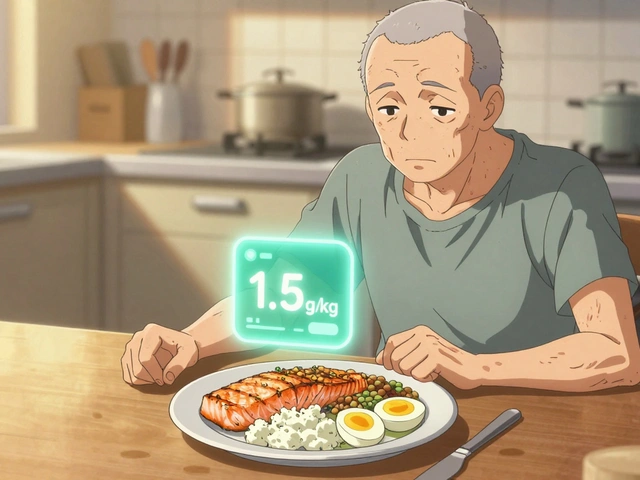
Julia Strothers
November 21, 2025 AT 19:15The FDA is just a puppet for Big Pharma. You think they’re protecting patients? Nah. They’re protecting profits. Every time a generic gets approved, it’s because some lobbyist whispered in the right ear. That $129,500 fee? That’s not to fund reviewers-it’s a bribe to keep the system slow enough for the big guys to keep their monopolies. And don’t get me started on Paragraph IV certifications-those are just legal traps to scare off small companies. This isn’t healthcare. It’s corporate warfare dressed in lab coats.
David Cusack
November 22, 2025 AT 21:08Let us not conflate regulatory efficiency with public good; the ANDA process, while ostensibly streamlined, remains a labyrinthine exercise in bureaucratic inertia-replete with arbitrary thresholds (80–125%? Really?) and opaque compliance metrics that favor the well-funded. The FDA’s obsession with bioequivalence, while statistically defensible, ignores pharmacodynamic variance across populations-a glaring epistemic blind spot. And let us not forget: eCTD is not a format-it is a dystopian ritual.
Donald Frantz
November 23, 2025 AT 05:54People don’t realize how much of this is about scale. You can’t just tweak a tablet formula and expect the FDA to approve it. I’ve seen companies spend $2M on a single stability study because they didn’t test at commercial scale. The 100,000-unit rule isn’t arbitrary-it’s because manufacturing isn’t magic. What works in a lab flask fails when you’re producing 10 million tablets a month. If you’re serious about generics, you need engineers, not just chemists.
Sammy Williams
November 24, 2025 AT 00:04Man, I wish more people knew how amazing this system is. I work in a pharmacy and see people choosing between meds and groceries every day. Generic insulin saved my cousin’s life. The ANDA process isn’t perfect, but it’s the reason most of us can afford our prescriptions. Yeah, it’s complicated-but if you’re building a generic, you owe it to the people who need it to get it right. Don’t cut corners. Do the work.
Kartik Singhal
November 25, 2025 AT 10:29LOL the FDA is so "scientific" 😂 They reject apps over 2% slower dissolution? Meanwhile, Big Pharma sells pills with 20% impurities and calls it "batch variation." 🤡 And don’t even get me started on how they approve new cancer drugs with 30 patients and no long-term data. Double standards much? #PharmaControl #FDAIsACorporateToothbrush
Logan Romine
November 26, 2025 AT 07:11So we’ve turned medicine into a math problem: 80–125% bioequivalence, because apparently, the human body is just a beaker with a pulse. 🤖 We’ve replaced trust in doctors with trust in spreadsheets. And yet, we’re shocked when people get worse on generics? Maybe the problem isn’t the drug-it’s the delusion that biology can be quantified like a stock price. We’re not machines. We’re messy, irrational, and deeply biological. And the FDA? They’re trying to fit us into a PowerPoint slide.
Mark Kahn
November 26, 2025 AT 20:08If you’re thinking about filing an ANDA, just do one thing: book a pre-ANDA meeting. I know it costs money, but I’ve seen teams lose a year and half a million dollars because they skipped it. The FDA reviewers aren’t your enemies-they’re just trying to avoid another 12-month delay. Talk to them early. Ask questions. They’ll give you feedback. Seriously. It’s not a trap. It’s a lifeline.
Anne Nylander
November 27, 2025 AT 22:54generic drugs are a MIRACLE. i know someone who takes blood pressure meds and they cost $4 a month now instead of $400. that’s not a stat-that’s someone keeping their job, feeding their kids, not choosing between meds and rent. the system is broken? yeah. but this part? this part works. don’t let the noise make you forget that.
Noah Fitzsimmons
November 28, 2025 AT 21:19Oh wow, another whitepaper on how the FDA is "fair." Tell me, did you also write a 5000-word essay on how gravity is a myth? You really think companies aren’t gaming this system? They submit junk data, wait for the 30-month stay, then quietly buy the brand company. That’s not competition-that’s hostile takeover with a FDA stamp. And you’re celebrating it? Pathetic.
Eliza Oakes
November 30, 2025 AT 05:33Wait, so the FDA rejects generics because the tablet dissolves 2% slower-but they approve a $1000/month brand drug that’s 30% less effective? That’s not regulation. That’s a cult. And you people are the priests. I swear, if I had a dollar for every time someone said "it’s for patient safety" while ignoring the fact that 1 in 4 Americans skip meds because they can’t afford them… I’d buy a private island and never read another FDA guideline again.
Simone Wood
December 1, 2025 AT 21:48Let me just say-this entire system is a charade. The eCTD format? A nightmare. The GDUFA fees? A tax on innovation. And don’t even get me started on the bioequivalence thresholds. The FDA treats the human body like a chemistry set from 1987. Meanwhile, real science is moving toward pharmacogenomics and personalized dosing-and here we are, stuck in a world where a 2% dissolution difference is a dealbreaker. This isn’t science. It’s medieval bureaucracy.
Swati Jain
December 2, 2025 AT 06:29Look, I get it-this is technical. But here’s the thing: if you’re building a generic, you’re not just making a pill. You’re building hope. A single mom in Delhi. A vet in Ohio. A kid with asthma in Lagos. They don’t care about Cmax or AUC. They care if the pill works. And if you cut corners? You’re not just failing a regulation-you’re failing people. So yeah, the rules are hard. But they’re there for a reason. Don’t be lazy. Do it right.
jim cerqua
December 3, 2025 AT 01:57They rejected a generic because the bottle cap didn’t meet stability specs? LOL. So now we’re regulating the *container* like it’s a nuclear reactor? What’s next? Mandatory emotional stability testing for pill labels? The FDA is a goddamn cult. They don’t want to approve drugs-they want to control them. And every time they say "patient safety," they mean "profit protection." This isn’t medicine. It’s a monopoly machine.
Erika Sta. Maria
December 4, 2025 AT 19:56Wait so the ANDA process is supposed to be the hero? But what about the 40% of generics that get recalled for contamination? Or the ones that cause seizures because they used a different dye? And you’re telling me the FDA’s 80-125% bioequivalence is enough? That’s not science-that’s a coin flip. If you’re going to trust a generic, you’re trusting a lottery ticket. And the worst part? You don’t even know you’re playing.